 It’s been a season and a year of sequels to 2015 shows I liked very much, but not quite enough to wedge them into my Top 10 list for the year. We had several of them just this summer and it’s interesting to see the varying approaches each has taken to the task at hand. Kyoukai no Rinne plowed straight ahead, with no change in approach from the first season. Binan Koukou, with the luxury of being an anime original, managed to recycle its formula but tweak it and self-satirize it enough to make it fresh. Arslan Senki cut itself off at the pass, telling a very small part of its story in only eight episodes.
It’s been a season and a year of sequels to 2015 shows I liked very much, but not quite enough to wedge them into my Top 10 list for the year. We had several of them just this summer and it’s interesting to see the varying approaches each has taken to the task at hand. Kyoukai no Rinne plowed straight ahead, with no change in approach from the first season. Binan Koukou, with the luxury of being an anime original, managed to recycle its formula but tweak it and self-satirize it enough to make it fresh. Arslan Senki cut itself off at the pass, telling a very small part of its story in only eight episodes.
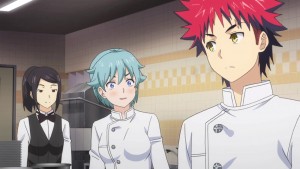 Then we have Shokugeki no Souma, which is a unique case for a few reasons. It’s a big series in manga form, but not huge – it was never of a class with the WSJ titans like Kurobas and Ansatsu Kyoushitsu, and it’s been passed up by Boku no Hero Academia in terms of sales (and spinoffs) this year. It’s hard to know what the production committee had in mind when it decided to make this season of Souma one cour, but whatever their reasoning it most certainly did have an impact on the season as a whole. It still robustly entertained, but something was definitely different the second time around.
Then we have Shokugeki no Souma, which is a unique case for a few reasons. It’s a big series in manga form, but not huge – it was never of a class with the WSJ titans like Kurobas and Ansatsu Kyoushitsu, and it’s been passed up by Boku no Hero Academia in terms of sales (and spinoffs) this year. It’s hard to know what the production committee had in mind when it decided to make this season of Souma one cour, but whatever their reasoning it most certainly did have an impact on the season as a whole. It still robustly entertained, but something was definitely different the second time around.
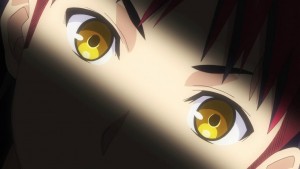 I find myself kind of wishing it’d been the Stagiare arc had been the one given the bulk of the screen time, and the Autumn Elections arc three episodes. That’s not the way things work of course, especially in shounen. By any conventional measure the election was the big story of the season, the headline grabber, while the Stagiare arc is the change of pace. But the final impact of Ni no Sara was lessened a bit by its singular focus on the battle. Much of the richness and subtlety of the human story was left behind because there simply wasn’t time for it. The Elections arc was excellent stuff, but it rather ruthlessly trampled everything in its path.
I find myself kind of wishing it’d been the Stagiare arc had been the one given the bulk of the screen time, and the Autumn Elections arc three episodes. That’s not the way things work of course, especially in shounen. By any conventional measure the election was the big story of the season, the headline grabber, while the Stagiare arc is the change of pace. But the final impact of Ni no Sara was lessened a bit by its singular focus on the battle. Much of the richness and subtlety of the human story was left behind because there simply wasn’t time for it. The Elections arc was excellent stuff, but it rather ruthlessly trampled everything in its path.
 It’s in these last three episodes that we’ve really seen the Shokugeki no Souma of the first season and come to learn more about Souma as an aspiring chef. Chefs are artists, make no mistake about it, and this arc has done an excellent job of depicting the struggle of the young artist to find their own voice. It’s also done a fine job of highlighting the high-pressure world of the professional kitchen, an environment that has chewed up many who thought they were tough and spit them out. Stuff like the Elections arc is exciting, but it’s the material like the Stagiare arc that really drew me in to Shokugeki no Souma.
It’s in these last three episodes that we’ve really seen the Shokugeki no Souma of the first season and come to learn more about Souma as an aspiring chef. Chefs are artists, make no mistake about it, and this arc has done an excellent job of depicting the struggle of the young artist to find their own voice. It’s also done a fine job of highlighting the high-pressure world of the professional kitchen, an environment that has chewed up many who thought they were tough and spit them out. Stuff like the Elections arc is exciting, but it’s the material like the Stagiare arc that really drew me in to Shokugeki no Souma.
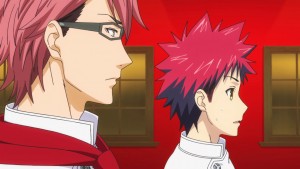 I have a real appreciation for the way this episode was presented, with a lack of histrionics and shounen tropes. Shino really shines here – he’s tough but never petty, brash and confident but not arrogant (and he did it all for his mom). He knows he’s a genius, but he also knows that the goals he’s set for himself are so lofty that he might very well fail to achieve them. He also sees that Souma is a talent to be recognized, a young man with a willingness to listen and an ability to learn – someone worth spending time on. His staff, likewise, doesn’t get bogged down in petty jealousy and the limitless yoke of Japan’s obsession with seniority. Souma-kun is a very lucky boy to have been sent to learn from this man and his team, and that makes me wonder who it was doing the sending. They knew what they were doing.
I have a real appreciation for the way this episode was presented, with a lack of histrionics and shounen tropes. Shino really shines here – he’s tough but never petty, brash and confident but not arrogant (and he did it all for his mom). He knows he’s a genius, but he also knows that the goals he’s set for himself are so lofty that he might very well fail to achieve them. He also sees that Souma is a talent to be recognized, a young man with a willingness to listen and an ability to learn – someone worth spending time on. His staff, likewise, doesn’t get bogged down in petty jealousy and the limitless yoke of Japan’s obsession with seniority. Souma-kun is a very lucky boy to have been sent to learn from this man and his team, and that makes me wonder who it was doing the sending. They knew what they were doing.
 The true meaning of the Stagiare, as Chapelle-sensei notes, is not just to see if the chef’s eggs can make an impact. It’s also to see if they have what it takes to be a sponge – to steal from the best and make their own. This is the time-honored history of culinary education, the apprenticeship – to learn in a working kitchen rather than a classroom. Conveniently, this is what Souma has already decided he needs to do after his defeat in the elections – to break free of being someone who imitates others and to become someone with a voice of his own. And his entry into Shino’s competition represents that – a French-accented take on a humble Japanese classic. It’s not executed well-enough to win, but it shows Shino what he needed to see – a vision. And it’s what gets Souma passed through the Stagiare (and his “Cheeky Youngster Style” quail stuffed with risotto on Shino Tokyo’s menu).
The true meaning of the Stagiare, as Chapelle-sensei notes, is not just to see if the chef’s eggs can make an impact. It’s also to see if they have what it takes to be a sponge – to steal from the best and make their own. This is the time-honored history of culinary education, the apprenticeship – to learn in a working kitchen rather than a classroom. Conveniently, this is what Souma has already decided he needs to do after his defeat in the elections – to break free of being someone who imitates others and to become someone with a voice of his own. And his entry into Shino’s competition represents that – a French-accented take on a humble Japanese classic. It’s not executed well-enough to win, but it shows Shino what he needed to see – a vision. And it’s what gets Souma passed through the Stagiare (and his “Cheeky Youngster Style” quail stuffed with risotto on Shino Tokyo’s menu).
 What now? Well, that’s the $64,000 question, isn’t it? Shokugeki no Souma seems to be in a grey area, a successful shounen franchise that isn’t quite a blockbuster. Like most shounen it doesn’t sell many discs (though I’m a bit puzzled at that, in this case), but series like AssClass (and probably now BnHA) were and are big enough in manga form for that not to be essential for a full (or at least extended) adaptation. Is Shokugeki no Souma? Honestly I don’t know – if I were betting I’d say it’s better than even-money that we see at least one more season, but I wouldn’t want to put my own cash on the table to back it up.
What now? Well, that’s the $64,000 question, isn’t it? Shokugeki no Souma seems to be in a grey area, a successful shounen franchise that isn’t quite a blockbuster. Like most shounen it doesn’t sell many discs (though I’m a bit puzzled at that, in this case), but series like AssClass (and probably now BnHA) were and are big enough in manga form for that not to be essential for a full (or at least extended) adaptation. Is Shokugeki no Souma? Honestly I don’t know – if I were betting I’d say it’s better than even-money that we see at least one more season, but I wouldn’t want to put my own cash on the table to back it up.
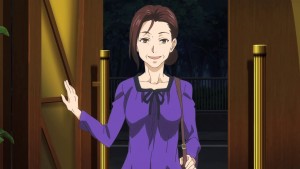 I do hope we get more Souma, because considering how obsessed the Japanese are with food there aren’t nearly enough good anime (or anime period, really) that focus heavily on the subject. This series treats gastronomy with respect – it does its homework, and underlying the grandiose half-spoofs of shounen tropes is a real understanding of cooking and the pleasures of food. This is a good story and it’s clear that it has most of that story still to tell, and it’s one of those manga that’s obviously perfectly-suited for the anime medium. Food is all about using all your senses, and Shokugeki no Souma has been a feast for the senses from day one. Here’s hoping there are a few more courses still to be served.
I do hope we get more Souma, because considering how obsessed the Japanese are with food there aren’t nearly enough good anime (or anime period, really) that focus heavily on the subject. This series treats gastronomy with respect – it does its homework, and underlying the grandiose half-spoofs of shounen tropes is a real understanding of cooking and the pleasures of food. This is a good story and it’s clear that it has most of that story still to tell, and it’s one of those manga that’s obviously perfectly-suited for the anime medium. Food is all about using all your senses, and Shokugeki no Souma has been a feast for the senses from day one. Here’s hoping there are a few more courses still to be served.


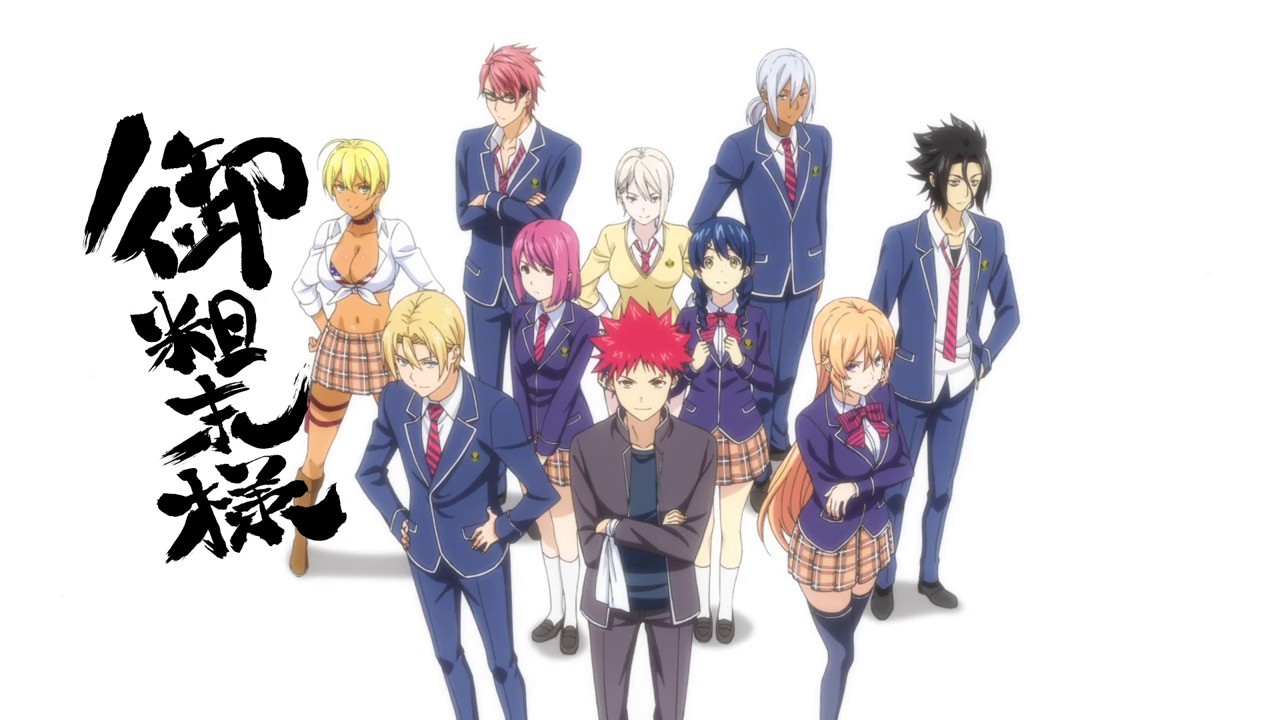
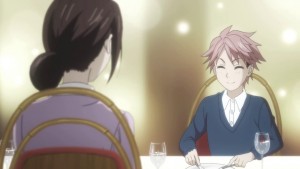
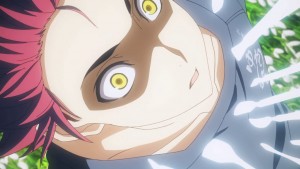


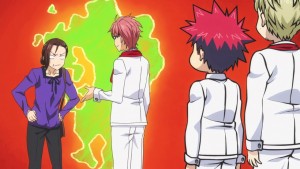
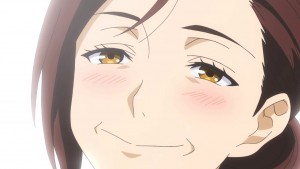
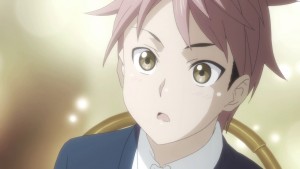
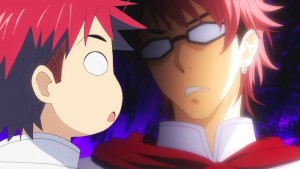
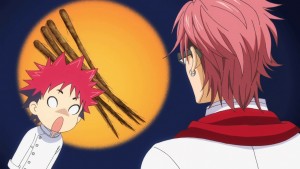

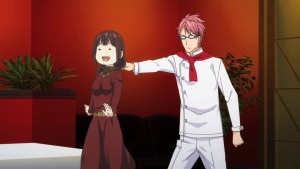
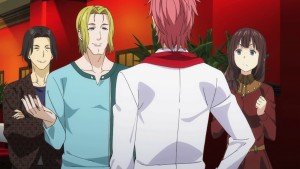



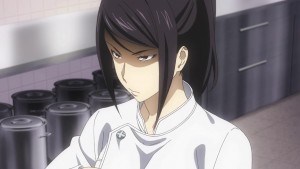

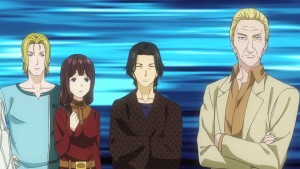


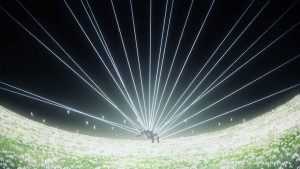
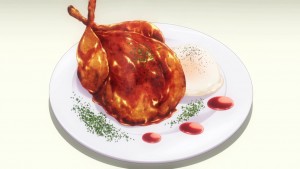


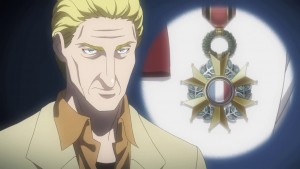
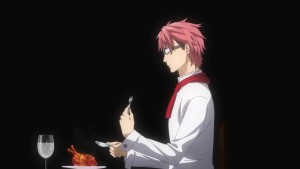
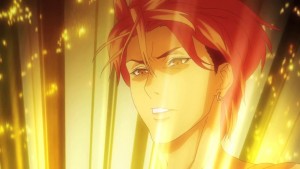

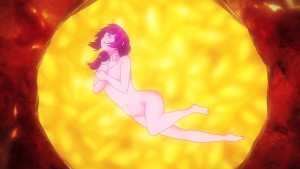



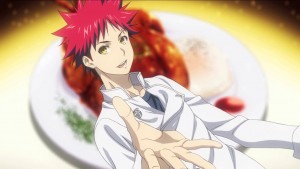
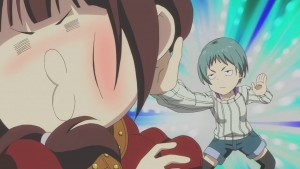
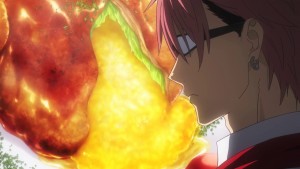
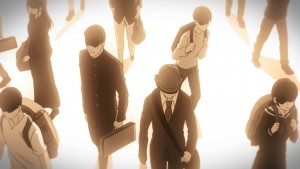

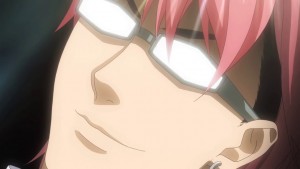

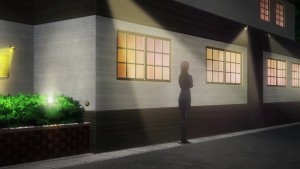
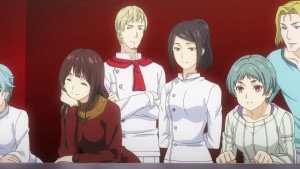
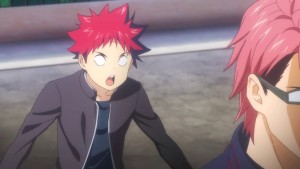
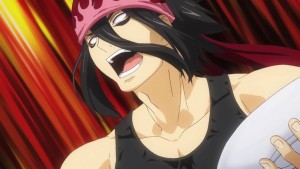
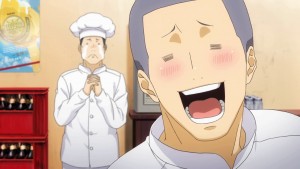
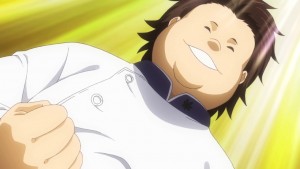
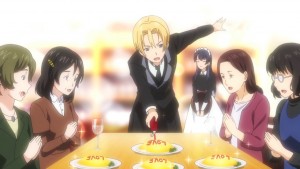
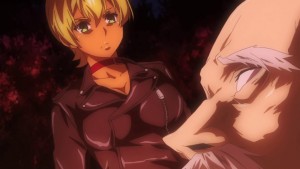

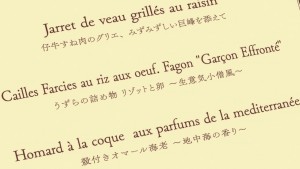
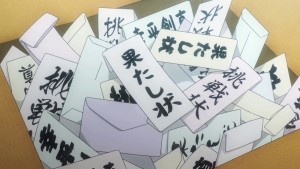

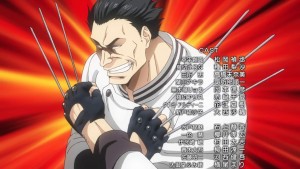
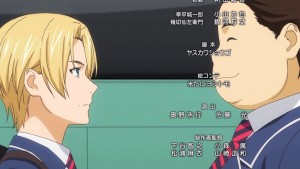
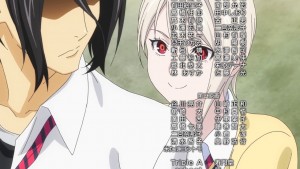
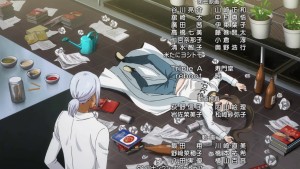
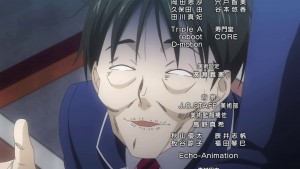
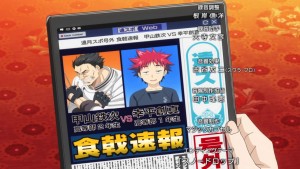
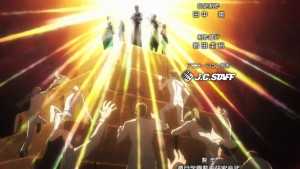
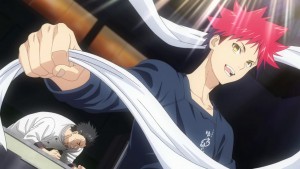



deathslinky
September 25, 2016 at 2:38 amAs a manga reader, just want to say there are structural issues with adapting the rest of the story. I promise not to spoil anything.
This season of the anime ends at Chapter 117 out of 184. Next up is a short School Festival arc, but right after that there’s a game changer which leads into the current arc, still ongoing with no end in sight. In any case, they’d have to wait a few seasons for the manga to build up enough content, but even then, if the current arc still isn’t finished, it might be tricky finding a good stopping point for a season break.
Guardian Enzo
September 25, 2016 at 8:53 amOf course, the general course with WSJ adaptations in cases like that has been to use original material to bridge that gap.
HBash
September 25, 2016 at 12:03 pmI think that WSJ has largely stopped that practice.. Pretty sure that there are many filler-based disc sets sitting on shelves, especially of the big shonen series.
Plus (I think that) it costs more money to do because everything has to be done from scratch, without the help of referencing (or even tracing) existing manga panels. So it would take more man hours.
Having read the manga, I agree with deathslinky’s comment, the manga is still exploring the aftermath of an extreme gamechanging event.. So very difficult to keep going until at least the current arc is done.
leongsh
September 25, 2016 at 1:39 pmAt the rate that the current arc is going and taking into account the various marker points that the manga said it would go, there could easily be another 30+ chapters to end this current arc. It will take awhile before the current arc ends and another season of this show comes out.
Simone
September 26, 2016 at 6:54 amYeah, I always wondered why’d they even bother. Fillers are universally hated, the quality is always lower and derivative, and they really don’t serve any purpose except perhaps keeping the kids attached to their weekly appointment. Well, anyway, Souma’s first season didn’t have any qualms stopping right at the end of the preliminaries to the Elections, so maybe a S3 could just find a suitable stopping point mid-arc and then leave the rest for a potential S4.
Or they follow the TWGOK route, wait a lot, then compress the entirety of the new arc in a few episodes by skipping entirely the short arc preceding it.
Guardian Enzo
September 26, 2016 at 8:39 amWell, I think they bother because they want to have a product out there generating some income for the franchise. But they tend to do it mainly with second-tier products (like WT) that they’re more interested in bleeding dry than with ones they consider part of their long-term foundation (with a few exceptions, of course).
I see this “fillers are universally hated” thing a lot, and while it tends to be true, I don’t think it’s universal. Some serious do manage to pull off original material the fans actually like.